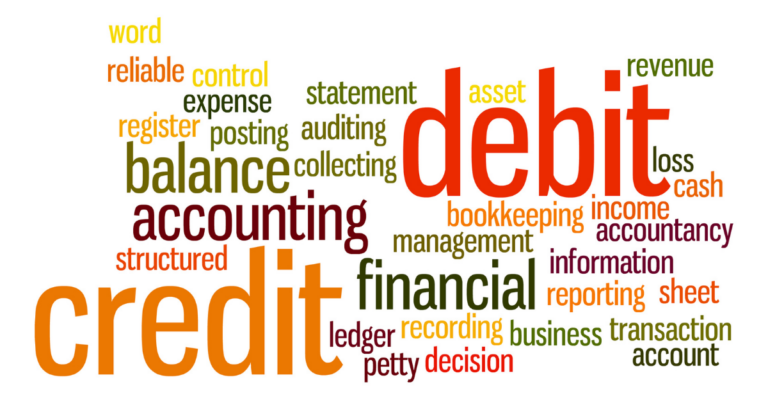Simplified: How Account Audits Work in Finance & Accounting
Understanding Account Audits: Key to Financial Transparency
Simplifying Account Audits for Financial Clarity
Account audits are like magnifying glasses for your finances – they zoom in on the numbers to ensure everything adds up correctly. Imagine trying to complete a complex puzzle; account audits help you verify each financial piece is in its rightful place. As you navigate the intricacies of your financial landscape, an account audit brings a much-needed layer of clarity to the table. By meticulously examining transaction records and financial statements, these audits illuminate every corner of your organization’s financial health.
The Growing Importance of Account Audits in Today’s Economy
As the business environment becomes more complex and intertwined, the significance of account audits blossoms. They’re not just a set of checkboxes for compliance anymore; they’ve evolved into fundamental tools for transparency and trust in the financial ecosystem. Shareholders, investors, and other stakeholders increasingly rely on the assurance that comes with a rigorous audit – they need to know that what they see in financial reports is accurate and fair.
In today’s buzzword-heavy economy, with concepts like sustainability and corporate responsibility gaining traction, the scope of audits is expanding. Auditors play a pivotal role not just in financial accuracy, but in validating environmental, social, and governance (ESG) claims, as well as making sense of the burgeoning digital currency markets.

The Anatomy of an Account Audit
Breakdown of Audit Phases: Preparation to Reporting
Embarking on an account audit journey involves several critical stops from start to finish. First up is the preparation phase, where the groundwork is laid. Auditors assess the lay of the land: understanding the business, evaluating risk areas, and mapping out the audit strategy. Following closely is the fieldwork stage, where auditors roll up their sleeves and delve into the nuts and bolts of financial data.
Here, they scrutinize invoices, inspect ledgers, and test control systems, ensuring each financial component stands up to thorough review. After the data dissection, we reach the reporting phase, where auditors consolidate their findings into digestible insights. They flag any irregularities and hand over a comprehensive report that tells the financial story in its most transparent form.
And finally, it’s not a ‘one and done’ deal – follow-up rounds out this journey. This phase ensures that any identified issues are rectified, and recommendations are implemented, closing the loop on the audit process and adding a layer of continuous financial vigilance.
Key Components: Compliance, Accuracy, and Fraud Detection
When it comes to the pillars of account auditing, three components stand tall: compliance, accuracy, and fraud detection.
Compliance is about making sure that the financial conduct of an organization adheres to the law of the land and the dizzying array of industry regulations. Auditors act as gatekeepers, ensuring that each financial act doesn’t step out of line with these standards. They leave no stone unturned, checking that policies and procedures are not just present, but practiced.
Accuracy is the beacon that guides every auditor’s path – it’s the pursuit of truth in numbers. Auditors are the meticulous fact-checkers in a world of financial statements, verifying that every dollar reported is a dollar accounted for.
Last, but certainly not least, is fraud detection. In this world where financial indiscretions can hide in the smallest of transactions, auditors come armed with a keen eye for uncovering any financial foul play. Their work reinforces the financial fortresses of organizations, installing checks and balances that make fraudsters think twice.

Inside the Auditor’s Toolbox
A Look at the Methods and Tools Used in Account Auditing
Dive into an auditor’s toolbox and you’ll find a fascinating array of methods and tools designed for detective work in the financial realm. Auditors have a mixed bag of traditional procedures, like physical document inspection and interviews with personnel, blended with cutting-edge digital tools such as data analytics software. Sampling is a cornerstone technique, allowing auditors to make inferences about entire data sets through the examination of select items.
But that’s just the tip of the iceberg. In today’s digital age, auditors are tapping into specialized software that can churn through mountains of data with ease, spot anomalies in real-time, and even predict potential risk areas by harnessing the power of machine learning.
Couple this with electronic workpapers, which keep audits organized and streamlined, and Computer-Assisted Audit Tools (CAATs), which perform complex analyses not humanly possible, and you get a new era of audit efficiency and accuracy.
Why Bank Statements Are Integral to the Audit Process
Bank statements stand as the financial autobiography of an entity, chronicling the cash flow story that auditors are eager to read. These statements are integral because they serve as a truth serum for the financial activities presented in ledgers and reports. They offer a concrete benchmark – real numbers against which recorded transactions can be measured.
Moreover, bank statements don’t fib. They present an unembellished picture of an entity’s financial health, capturing every heartbeat of income and expenses. Auditors dissect each line with surgical precision to spot inconsistencies, identify missing pieces, and confirm the reliability of financial reporting.
Given their importance, auditors often request bank statements early in the audit process to cross-reference every entry with corresponding records. It’s not an overstatement to say that bank statements are the cornerstone of financial transparency and credibility in the auditing process.

Navigating Through Different Types of Audits
Internal vs. External Audits: A Comparative Analysis
When you hear “internal audit,” think of it as a financial check-up from within. It’s where internal auditors, who are part of the organization, take a microscope to the company’s operations. They focus on evaluating the effectiveness of internal controls, risk management, and overall governance. The aim? To recommend improvements and make sure everyone’s playing by the internal rulebook.
Switch over to “external audit,” and you’re looking at an independent entity coming in from the outside. They swoop in to examine and provide assurance on the truth and fairness of the financial statements. Their verdict carries weight, offering stakeholders a reliable validation of the company’s financial integrity.
While both audits aim for financial truthfulness, internal audits are a continuous process that supports management’s objectives, and external audits, typically annual events, are indispensable for statutory and credibility purposes.
Specialized Audits: Understanding Their Purpose and Scope
Specialized audits are the financial world’s bespoke tailors. They’re tailored to fit the unique fibers of different business sectors, from nonprofits and educational institutes to government entities and tech startups. Unlike the broad strokes of general financial auditing, specialized audits zoom in on industry-specific risks, compliance nuances, and operational peculiarities.
For instance, a healthcare audit might drill into the compliance with Health Insurance Portability and Accountability Act (HIPAA) standards, while a construction audit may hinge on the precision of cost overruns and contract fulfillment. The purpose of these audits is to ensure that, within each distinct industry landscape, organizations don’t just survive, but thrive, by staying on top of the specialized rules governing them.
The scope of these audits stretches as far as the regulatory and operational specifics of each sector, often requiring auditors with niche expertise and an eye for the sector’s particular details.

Common Challenges and Best Practices in Account Auditing
Addressing Pitfalls in the Audit Trail
Navigating the audit trail often feels like walking a tightrope – one misstep can lead to perilous pitfalls. Some of the common misadventures that auditors confront include missing documentation, which can cast doubt on transaction legitimacy. Avoid suspicion by maintaining thorough, accessible records.
Then there’s the risk of duplicate payments, a sign that the accounts payable process may need an overhaul for better visibility. Save the organization from draining its financial reservoir through meticulous tracking and reconciliation.
Improper handling of trust accounts is another landmine, especially in fields like law, where ethics are paramount. Regular reconciliation and understanding the designated use of these accounts is crucial to prevent ethical violations.
By staying vigilant for these warning signs and others, such as questionable recipients or sources in transactions, auditors can help maintain the financial integrity of an organization.
Strategies to Ensure Efficient and Effective Audits
Crafting a strategy for efficient and effective audits can transform a daunting maze into a straightforward path. Start by fostering a culture of transparency where information flows freely, making it easier to dig into the financial depths when needed. Equip your team with the latest audit software and tools to boost productivity and precision—think of it as giving them financial superpowers.
Regularly training staff, not only in your audit team but company-wide, can help ensure everyone is on the same page when it comes to processes and compliance. This proactive approach minimizes the risk of errors and discrepancies down the line.
Pre-audit planning is the cornerstone of efficiency. By clearly defining audit objectives and scope, you can pinpoint which areas to focus on, saving time and resources. Additionally, by leveraging risk assessment techniques, you can prioritize the audit areas that matter most.
Lastly, consider the feedback loop as your best friend. Post-audit reviews to discuss what went well and what could be improved are invaluable for refining future audits, making each one smoother than the last.
The Future of Account Audits in Finance
The Role of AI and Automation in Transforming Audits
AI and automation are shaking up the audit tradition with a tech-laden twist. Imagine an auditor ninja powered by AI – faster, smarter, and more accurate. AI algorithms rapidly scrutinize vast datasets, flagging anomalies and patterns humans could easily overlook. The bonus? They do this tirelessly and consistently, eliminating human fatigue from the equation.
Machine learning, a subset of AI, tunes itself with every audit, learning to identify risks and anomalies faster and more effectively. This not only streamlines the audit process but also elevates the audit quality by enabling human auditors to focus on complex judgment calls.
Automation streamlines repetitive tasks such as data entry and comparison, freeing up precious human intellect for strategic analysis. Think of robotic process automation (RPA) as your diligent audit assistant, handling the grunt work with unerring accuracy.
These technologies are transforming audits from a laborious task into a more strategic and insightful exercise, ultimately breathing new life into the audit profession and enhancing the value it provides.
How Firms Can Adapt to Emerging Audit Technologies
Adapting to emerging audit technologies is like learning a new dance – it takes practice, but once you’ve got the moves, it can be revolutionary. Firms need to embrace the shift by investing in their staff with up-to-date training on the latest software and analytical tools. Encouraging a culture that is not just tech-savvy but also tech-enthusiastic can pave the way for seamless integration of new systems.
It’s not just about having the right tools; it’s also about having the mindset to innovate continually. By building a team that’s agile and open to exploring the frontiers of technology, firms can stay ahead of the curve.
Moreover, updating the IT infrastructure to support these advanced technologies is crucial. This can mean adopting secure cloud services for accessibility or implementing robust cybersecurity measures to protect sensitive audit data.
Lastly, communication with clients about how these technologies improve the audit process can solidify trust. Clients need to understand that while the tools are changing, the commitment to thoroughness and integrity remains steadfast.

FAQs
What is the Typical Frequency for Conducting Account Audits?
Account audits for companies usually occur once a year, providing annual assurance for stakeholders on financial health. However, some businesses may undergo more frequent audits, such as quarterly, depending on specific industry requirements, regulatory landscapes, or because of internal policies designed to maintain stringent financial controls. The bottom line is that while annual audits are the norm, the specific frequency can vary based on numerous factors tailored to each organization’s needs and goals.
How Do Organizations Prepare for an Upcoming Audit?
Organizations prepare for an upcoming audit by neatly lining up their ducks—or rather, their documents. They gather financial records like previous audit reports, bank statements, receipts, and ledgers for easy access. Communication is king; they ensure that everyone involved is aware of their role in the audit process, reinforcing the importance of accuracy and cooperation. Additionally, conducting an internal audit helps trim any excess, identify gaps, and correct discrepancies, streamlining the terrain for external auditors to work efficiently. This preemptive housekeeping can significantly smooth the audit’s course.
Are There Industry-Specific Audit Requirements for Compliance?
Absolutely, there’s no one-size-fits-all when it comes to audit compliance. Various industries have their tapestries woven with unique regulatory threads. Financial institutions, for instance, are bound by stringent requirements like the Sarbanes-Oxley Act. Healthcare organizations might grapple with the Health Insurance Portability and Accountability Act (HIPAA), while public companies adhere to SEC regulations. Knowing and preparing for these specialized compliance standards is essential for an industry-specific audit to pass without a hitch.
- Simplified: How Account Audits Work in Finance & Accounting - November 25, 2024
- What is Amortization? 10 different types of amortized loans - April 12, 2023
- Business and Finance: What is a business debit card and what is it for? - February 2, 2023







